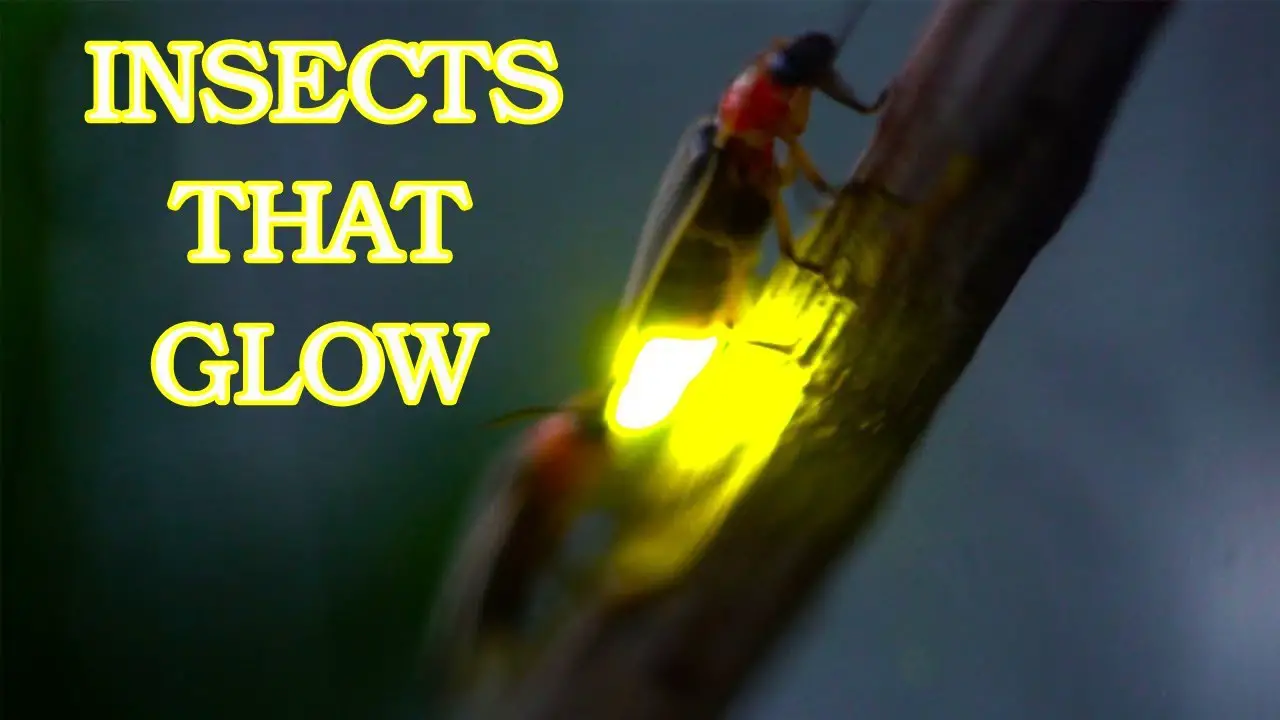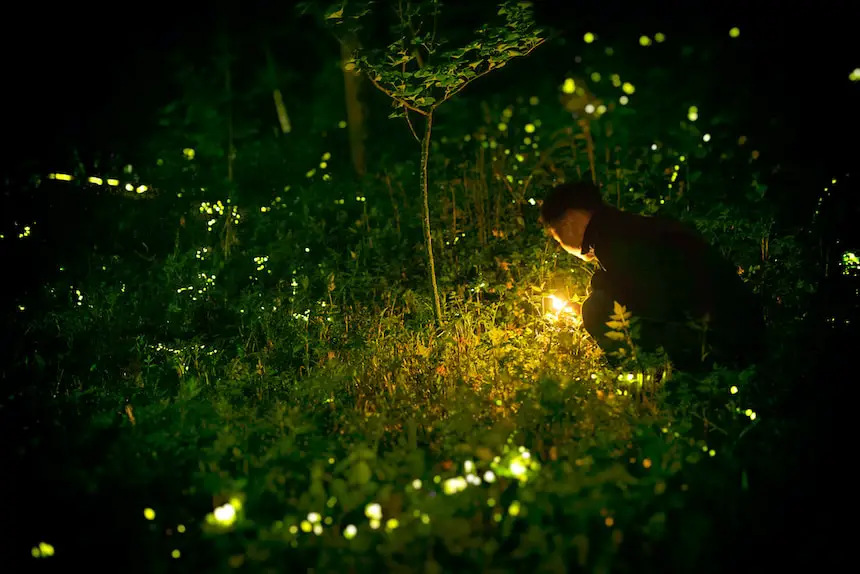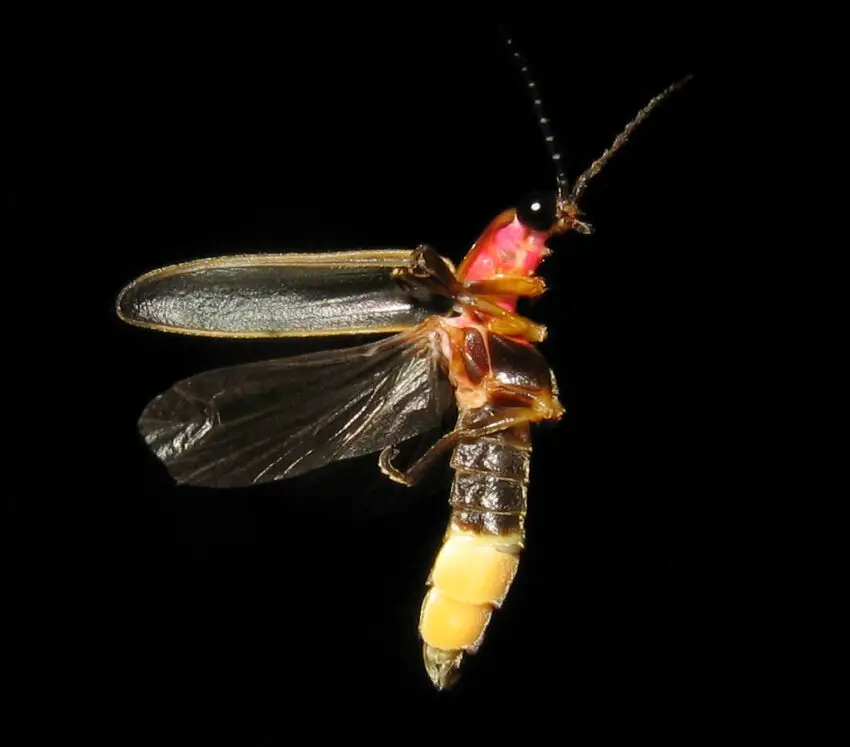10 Fascinating Firefly Facts for Kids to Spark Curiosity
Table of Contents
Fireflies are magical creatures that have fascinated people for centuries. These tiny insects are known for their bioluminescence, which is the ability to produce light through a chemical reaction in their bodies. Not only are they beautiful to watch, but they also play an important role in our ecosystem. Learning about fireflies is a great way to spark your child’s curiosity and get them excited about science and nature. In this post, we’ll share 10 fascinating facts about fireflies that will amaze and inspire kids of all ages. From the science behind their glow to their unique mating rituals, read on to discover the wonders of these enchanting insects.
What are fireflies?
Fireflies are one of the most fascinating insects in the world. They are also known as lightning bugs and are a type of beetle that is known for their unique light-producing ability. Fireflies are not flies, but rather beetles, and there are over 2,000 species of fireflies found all around the world. These amazing insects use their light to communicate with each other, attract mates, and even warn predators that they are toxic or distasteful.
Fireflies are found in many different habitats, including forests, fields, and even in your own backyard. They are most commonly found in warm and humid environments, but some species can also be found in colder climates. The light produced by fireflies is one of the most amazing natural phenomena in the world and has inspired people for centuries. Fireflies are truly a wonder of nature and learning more about them is a great way to spark curiosity and inspire a love of science in kids of all ages.
Why do fireflies light up?
Fireflies are unique insects that have the ability to produce light within their bodies. This natural phenomenon of producing light is called bioluminescence. But why do fireflies light up?
The answer is simple, fireflies use their light as a means of communication. Each flashing pattern is unique to each species and is used to attract a mate. The male firefly will fly around flashing its light pattern until a female responds with the same flashing pattern. This is their way of communicating and finding a mate.

Some species of fireflies also use their light as a defense mechanism to ward off predators. These fireflies will flash a warning signal to predators that they are toxic and should not be eaten.
It’s fascinating to note that the light produced by fireflies is extremely efficient. Nearly 100% of the energy produced is converted to light, unlike traditional bulbs where a lot of energy is lost as heat. This makes fireflies one of the most efficient light producers in the world.
Not all Fireflies Light Up
FLASH…flash, flash…FLASH. Tiny lights are sending out a message in code: “Hey, I’m over here. I’m female, and I’m ready to mate.” The pattern of flashes also identifies the firefly’s species. And by the way, this insect isn’t a fly of any kind; it’s actually a beetle.
In the night sky, a male firefly of the same species spots the lights and flashes back: “Message received. I’m coming. I’m coming.” Both partners repeat their messages until the male reaches the female and they mate.
Not all species of fireflies—also called lightning bugs—twinkle, but many of them do. They change chemical energy into light energy, and they’re very efficient at it. Unlike the bulb in your desk lamp, fireflies make light that is almost heat-free. In many species, the light-making organ sits near the end of the abdomen—a taillight of sorts. Some fireflies also produce light in the middle section of their bodies.

Many female flashers are wingless and earthbound, but these glowworms—as they’re sometimes labeled—can twist their bodies around to send their coded messages in different directions. Some also deliver false signals, luring males of different species, then eating them!
Even firefly larvae—also called glowworms—can glow. Scientists think the larvae might use their “taillights” as a warning: “Yucky tasting. Do not eat.” Many larvae spend about two years living in soil, rotten wood, or leaf litter, where they gobble up food such as worms, snails, and slugs. Then each one builds a dirtball around itself and emerges a week or two later as an adult.
Most grown fireflies live less than three weeks. During that time, some of them feed, and some of them don’t, but they all try to mate. Then the species that Twinkle put on quite a show. FLASH…flash, flash…FLASH.
Where do fireflies live?
Fireflies, also known as lightning bugs, live in various habitats around the world. They are found in temperate and tropical environments including fields, forests, marshes, and even in some deserts. Fireflies prefer moist environments and are commonly found near bodies of water such as ponds, streams, and rivers. This is because their larvae, which are also called glowworms, require moisture to develop.

Some species of fireflies are found in the treetops of tropical rainforests, while others prefer tall grasses and meadows. Certain species of fireflies are even found at high altitudes in the mountains. Depending on where you live, you may have different types of fireflies in your area.
Fireflies are also found on every continent except for Antarctica. Interestingly, each species of firefly has its own unique habitat preference and ecological niche. Some species are found in large groups while others are solitary. Learning about the different habitats of fireflies can help us appreciate these amazing insects and their role in the ecosystem.
How many species of fireflies are there?
Did you know that there are around 2,000 species of fireflies in the world? These fascinating insects can be found on every continent except Antarctica. While they may all look similar to the naked eye, each species has its own unique flash pattern to communicate with potential mates. Some species even synchronize their flashes, creating a spectacular light show in the night sky.

In North America alone, there are over 170 known species of fireflies. They can be found in a variety of habitats, from forests to fields to backyards. Each species has its own preferred habitat and niche within the ecosystem. For example, some species prefer to live near water while others are found in drier areas.
Despite their name, fireflies are not actually flies at all. They are beetles and belong to the family Lampyridae. These beetles have evolved the ability to produce light through a process called bioluminescence, which is caused by a chemical reaction inside their bodies. This light is used for communication, attracting mates, and warning predators of their bitter taste.
What colors do fireflies come in?
Fireflies are fascinating creatures that are known for their beautiful light displays, but did you know that they also come in different colors? Most people think of fireflies as being yellow or green, but they can actually be a range of different colors, including red, orange, and blue.
The color of a firefly’s light depends on the species and the chemicals that they use to produce its light. For example, some species of fireflies use a chemical called luciferin to produce a yellow-green light, while others use a different chemical called luciferase to produce a blue-green light.
Interestingly, the color of a firefly’s light can also change depending on whether they are trying to attract a mate or defend themselves from predators. For example, some species of fireflies will use a flashing pattern of different colors to attract a mate, while others will produce a bright, steady light to warn predators that they are poisonous.
How do fireflies communicate with each other?
Fireflies have a fascinating way of communicating with each other. They use a special type of light called bioluminescence, which they produce in their bodies. This light is used to attract potential mates, and for some species, to warn predators that they are toxic and should not be eaten.
Each species of firefly has its own unique light pattern, which is used to identify and communicate with its own kind. The males typically fly around and flash their lights, while the females stay on the ground and respond with their own flash patterns.
Fireflies can also use their light patterns to coordinate their behavior, such as synchronizing their flashes with other fireflies in their group. This is known as “flash synchronization” and is often seen in large groups of fireflies during mating season.
Interestingly, fireflies can also communicate with other species. Some species of fireflies mimic the light patterns of other species to attract and prey on them. This is known as “aggressive mimicry” and is just one of the many ways that fireflies have evolved to survive in their environment.
How long do fireflies live?
Fireflies, also known as lightning bugs, have a relatively short lifespan compared to other insects. The lifespan of a firefly varies depending on the species and gender. Adult male fireflies typically live only a few days to a few weeks, while females can live up to two months.
During their short lives, fireflies go through various stages of development. They start as eggs, which are laid in the soil or on plants, and hatch into larvae. Firefly larvae can live for up to a year, feeding on small insects, snails, and slugs. During this time, they molt several times before finally pupating and emerging as adults.
Once they become adults, fireflies only live long enough to mate and lay eggs before they die. Despite their short lifespan, fireflies play an important role in the ecosystem. They help to pollinate plants and are a food source for many other animals, including birds and spiders. Furthermore, their bioluminescence has inspired scientists to develop new technologies in areas such as medical imaging and environmental monitoring.
What do fireflies eat?
Fireflies are fascinating insects that light up the night skies with their bioluminescence. But have you ever wondered what they eat?
Contrary to popular belief, adult fireflies do not actually eat anything. This is because the adult stage of a firefly’s life cycle is meant solely for reproduction, and they only live for about two months. During this time, they focus on finding a mate and laying eggs for the next generation of fireflies.
However, the larvae of fireflies are voracious eaters. They typically feed on snails, worms, and slugs, as well as other insect larvae. Some species of fireflies even feed on other firefly larvae, making them cannibalistic predators!
Firefly larvae have specialized mouthparts that allow them to inject a paralyzing enzyme into their prey, which liquefies the insides and makes for easy consumption. They are active predators, and they spend most of their time hunting for food in the soil or among vegetation.
So while adult fireflies may not eat anything at all, their larvae make up for it with their insatiable appetites and unique hunting abilities.
How do fireflies help the environment?
Fireflies may be tiny insects, but they play a significant role in maintaining a healthy environment. In their larval stage, fireflies are predators that primarily feed on snails, slugs, and worms. By doing so, they control the population of these creatures and prevent them from causing damage to plants and crops. Additionally, adult fireflies serve as a food source for other animals like birds and bats, contributing to the balance of the ecosystem.
Another way fireflies help the environment is through their bioluminescence. Fireflies emit light in a process called “cold light,” which means they produce little heat. This makes them very efficient light producers, and they use this light to communicate with each other and attract mates. Fireflies’ light also serves as a natural pesticide, as it attracts other insects towards them, which are then eaten by fireflies.
Fireflies also act as bioindicators, meaning they are sensitive to changes in their environment. Their presence or absence can indicate changes in soil moisture, temperature, and air quality. By monitoring firefly populations, scientists can monitor the health of ecosystems and detect any negative environmental impacts.
Can you catch and keep fireflies as pets?
Fireflies are fascinating creatures that light up the summer nights. It’s no wonder kids often wonder if they can catch and keep them as pets. However, it’s not recommended to keep fireflies as pets for several reasons.
First, fireflies feed on other insects and larvae, which can be challenging to replicate in a captive environment. Moreover, fireflies are sensitive to changes in their environment and require specific conditions to thrive, such as the right temperature, humidity, and light levels. It’s hard to replicate these conditions in captivity, and it can be challenging to keep them alive and healthy.
Furthermore, fireflies are not like other common pet choices, such as dogs or cats. Fireflies are wild animals, and it’s important to respect their natural habitats. Capturing and keeping them as pets can disrupt the ecosystem and harm the firefly population.
Instead of keeping fireflies as pets, it’s best to enjoy their beauty in their natural habitat. Take a leisurely walk on a summer night and observe them lighting up the sky. You can also learn more about fireflies by reading books, watching documentaries, and visiting nature centers. By enjoying fireflies in their natural habitat, kids can develop a greater appreciation for the environment and the importance of preserving it.
Quick Firefly Facts
- A firefly larva can track down snails and slugs by following their trails of slime.
- Some tropical fireflies flash in huge masses. Even in thick jungles, mate-seeking fireflies can spot them.
- Fireflies inspired a grade three class to nominate the bugs as Pennsylvania’s state insect. The class circulated petitions and wrote letters until the “firefly bill” was signed.
Folklore
- Depending on where they live, some folks believe fireflies are good or bad:
- In Europe, a firefly inside a house is thought to be a sign that someone will die soon.
- In Japan, fireflies are blessed as the spirits of soldiers who have died for their country.
- In some Mediterranean countries, the flashing of fireflies is feared. The light is thought to have come from graves.
- In North America, a glowworm on a path signals success.
FAQs on Lightning Bugs
Are fireflies safe to touch?
Yes, fireflies are perfectly harmless. They may look a little weird, but they won’t hurt you if you touch them! In fact, it can be a lot of fun to catch one and watch it light up in your hand!
What is the rarest color of a lightning bug?
The rarest color of lightning bugs is golden yellow. This shimmering hue of gold is usually only seen near sunset, so make sure to keep an eye out at dusk!
What are 3 facts about fireflies?
- Fireflies use their light to attract mates and warn predators.
- A firefly’s light is created by a chemical reaction inside its body.
- Some species of firefly don’t even have wings!
What is the difference between a lightning bug and a firefly?
The main difference between a lightning bug and a firefly is that lightning bugs are actually a type of beetle, while fireflies are a type of flying insect. Lightning bugs glow throughout their entire bodies, while fireflies produce light from special organs on their abdomens.
What are the fake lightning bugs?
Fake lightning bugs or “glowworms” are actually larvae of certain beetles that emit a faint greenish-yellow glow. Unlike true lightning bugs, these creatures crawl instead of fly and do not produce their own light.
Is a lightning bug a roach?
No, lightning bugs and roaches are two completely different types of insects. Lightning bugs are part of the beetle family, while roaches belong to the order Blattodea.
Are lightning bugs worth money?
Unfortunately, lightning bugs aren’t worth much money. However, they can still be beneficial to humans as pest control because they eat many different types of pests!
Why are fireflies so friendly?
Fireflies are a solitary species with no real need for social interaction. That said, they rarely bite or sting humans and often seem curious around us. So, it could be said that they’re just naturally friendly creatures!
Do lightning bugs make noise?
Most species of lightning bug are silent, but some can make chirping noises when looking for mates. These noises are usually quite soft and can be hard to hear without getting very close!
Do birds eat lightning bugs?
Yes, some birds (such as purple martins) will sometimes feed on lightning bugs. But since lightning bugs are mainly nocturnal, this usually happens during early morning or late evening hours.
What is a ghost firefly?
A ghost firefly is a species of lightning bug that produces an especially pale light. It’s called a “ghost” because its light is almost ethereal in quality!
Are lightning bugs dying out?
Sadly, yes. One reason why this is happening is due to human activities such as habitat destruction and pollution. Fortunately, there are organizations dedicated to preserving these wonderful creatures.
Can lightning bugs survive in a jar?
While it’s possible for lightning bugs to survive in a jar for short periods of time, it’s not recommended as glass jars trap heat and can quickly become too hot for the insect.
Can fireflies stay alive in a jar?
Much like with lightning bugs, it’s possible for fireflies to stay alive in a jar for short periods of time but not recommended as it can be detrimental to their health.
Final Word
We hope you enjoyed reading our article about fireflies and that it sparked your child’s curiosity about these fascinating creatures. Fireflies are not just any ordinary insects; they are unique and have many interesting characteristics that make them stand out from other bugs. We hope that the information provided in this post will inspire your child to learn more about these fascinating creatures and even consider pursuing a career in science! Share this post with other parents and encourage them to explore the outdoors with their children and discover the wonders of nature.

